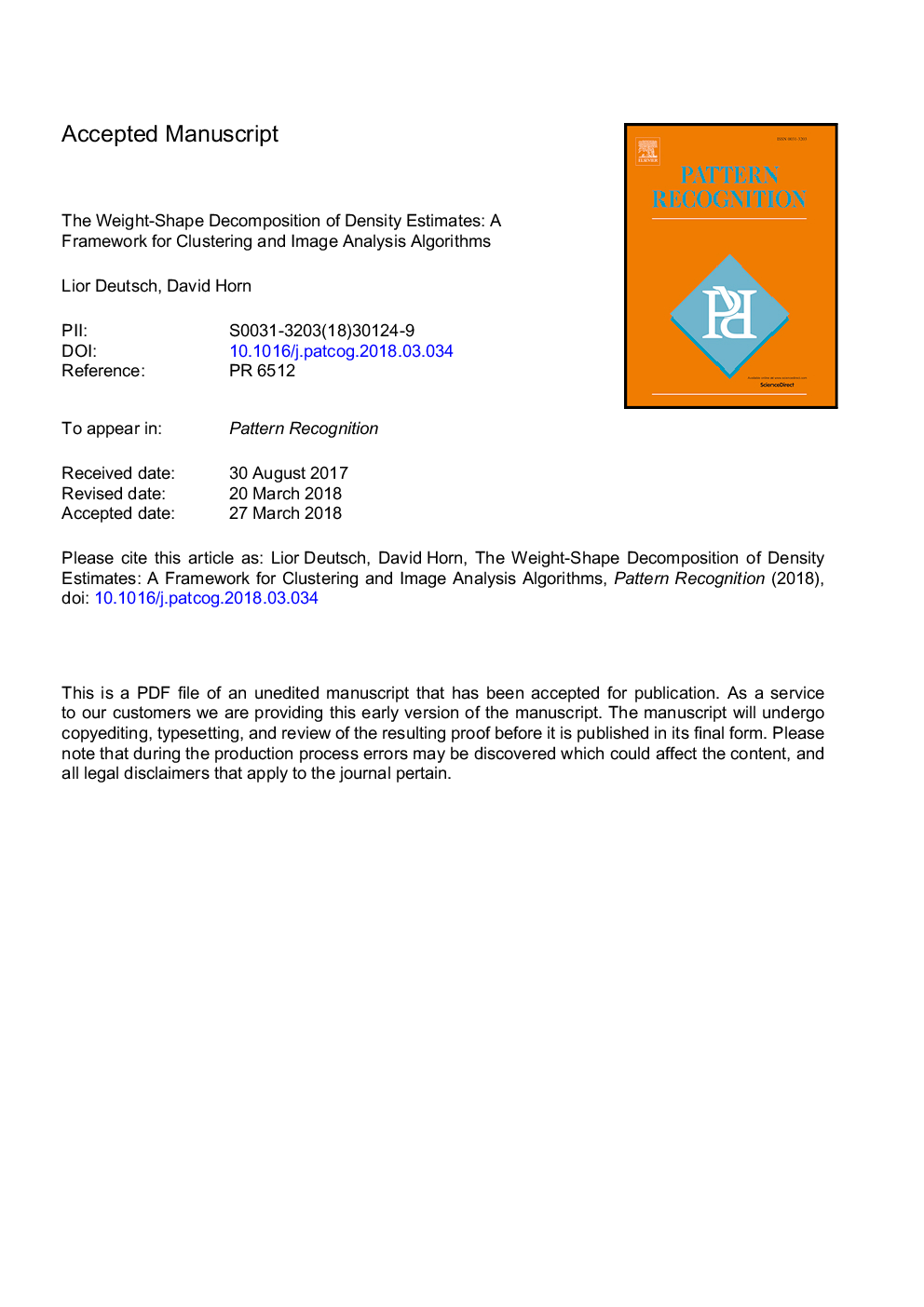| Article ID | Journal | Published Year | Pages | File Type |
|---|---|---|---|---|
| 6938805 | Pattern Recognition | 2018 | 29 Pages |
Abstract
We propose an analysis scheme which addresses the Parzen-window and mixture model methods for estimating the probability density function of data points in feature space. Both methods construct the estimate as a sum of kernel functions (usually Gaussians). By adding an entropy-like function we prove that the probability distribution is a product of a weight function and a shape distribution. This Weight-Shape decomposition leads to new interpretations of established clustering algorithms. Furthermore, it suggests the construction of three different clustering schemes, which are based on gradient-ascent flow of replica points in feature space. Two of these are Quantum Clustering and the Mean-Shift algorithm. The third algorithm is based on maximal-entropy. In our terminology they become Maximal Shape Clustering, Maximal Probability Clustering and Maximal Weight Clustering, correspondingly. We demonstrate the different methods and compare them to each other on one artificial example and two natural data sets. We also apply the Weight-Shape decomposition to image analysis. The shape distribution acts as an edge detector. It serves to generate contours, as demonstrated on face images. Furthermore, it allows for defining a convolutional Shape Filter.
Related Topics
Physical Sciences and Engineering
Computer Science
Computer Vision and Pattern Recognition
Authors
Lior Deutsch, David Horn,
